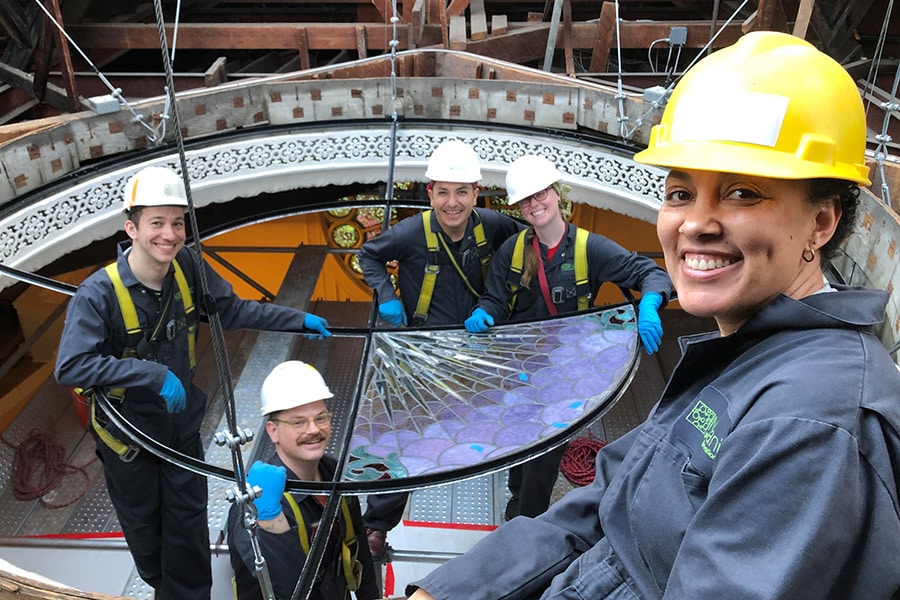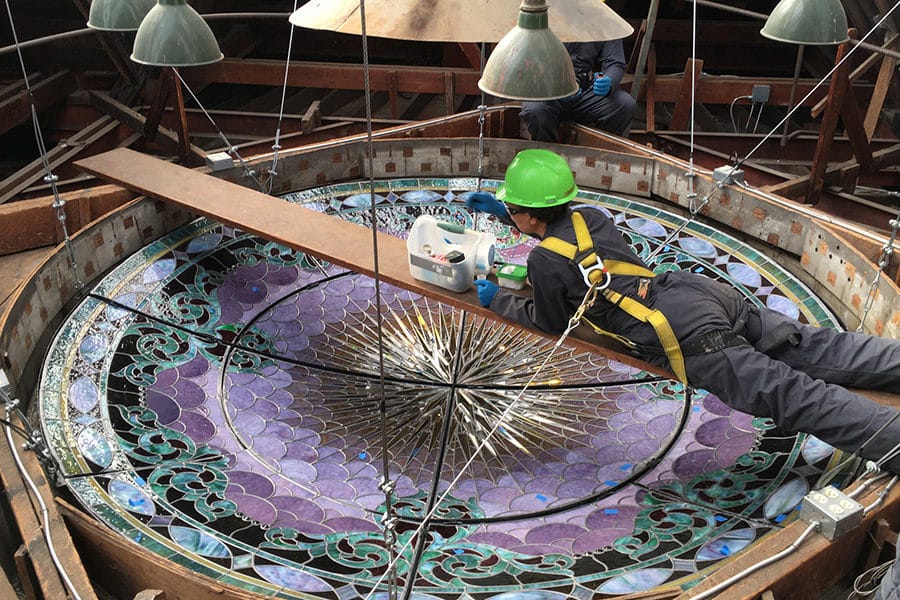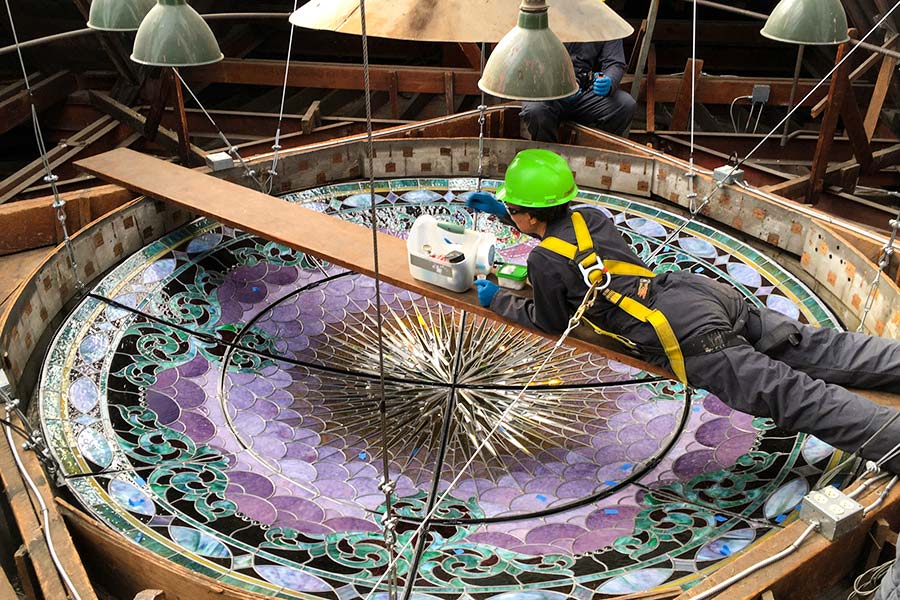For Ariana Makau, the founder and president of Nzilani Glass Conservation in the Bay Area of California, there’s a surprising modernity to stained glass.
One of the world’s most venerable decorative forms, stained glass has been experiencing something of a renaissance thanks to a growing community of popular Instagram artists.
The Built Blog sat down with Makau to talk about the future of this historical medium and how restoration work can help bring the designs of the past to light.
Telling stories in light
Makau discovered her passion for glass when she studied studio art and cinematography as an undergraduate student at Scripps College. While taking a stained glass course in Paris, she discovered how glass could tell a story.
“You can’t manipulate light,” she said, “so what mediums do you choose that you can tangentially manipulate light? Film is one, and windows are another. At that time, the nascent internet was the same thing. Now, we have our phones, but it’s glass that’s filtering light and telling you stories.”
Figurative stained glass became popular in Medieval churches as a narrative form. “Because people were illiterate, they used the windows of the churches to depict biblical stories,” Makau said. “The images were not intended to be static. They interacted with the natural light that comes through the window and really took on this dynamic form.”
This dynamic quality is one of the things that drew Makau to the world of stained glass restoration and creation, building a practice where she works collaboratively with artists and craftspeople from all walks of life.

“The people who work for Nzilani are people who are drawn to work for the company, are artists in themselves,” she said. But they’re not necessarily trained in the art of stained glass specifically. “We have people who have worked at frescoes, graffiti artists and mosaics,” she said. “If you’re a dancer and interested in stained glass, we probably have a place for you.”
For Makau, stained glass creation and restoration stands at the crossroads of art and craft. “Yes, I’m an artist, but I’m also a businesswoman,” she said. “I’m also somebody who’s thinking about technicalities of how your building is built, and making sure that your window is not going to fall out or get blown in during a storm, or let water in when it’s raining. There’s all these different hats that I wear.”
Defining restoration
In addition to the complex balance of working as an artist, craftsperson and businesswoman, Makau said a major part of her work at Nzilani is balancing the three major aspects of her stained glass practice: restoration, preservation and conservation.
“What I find really exciting and unique about stained glass is that you have to have a certain lens when you’re working on something in a museum or a collection, which is 100% focused on conservation,” she said. “But when you’re working in a dynamic site, you have to balance conservation and restoration.”
When embarking on a new project, Makau said it’s critical that the Nzilani team balance historical authenticity and respect for the materiality of the glass with the function of the structure.
“When I’m looking at a window to someone who I’m having an initial conversation with, I tell them that we can make this beautiful, but if your window is leaking, you don’t care about what we did to conserve it. You just want to make sure that your window is sealed and functioning as a window.”

A critical aspect of Nzilani’s restoration work is balancing authenticity and structural function. The glass they work with is often fragile and damaged from years of neglect or mishandling. Makau works to preserve as much as she can of the original craftsmanship while making sure that the piece is sound enough to withstand the test of time.
A challenging project
Makau’s lifetime work of balancing historical accuracy with contemporary practices of engineering and installation reached an apex with a recent project Nzilani completed restoring a 119-year-old inverted glass dome in a historic church in Oakland, California.
When she came in to do the initial consultation, Makau immediately knew she was facing a professional challenge.
“Because the dome was inverted from day one, gravity was pulling on it,” she said. But when Makau looked at the dome’s support structure, she realized that this project was even more complex than she expected.
“I looked up in the attic, and it had some weird plexiglass on top of it,” she said. “When I peeked underneath, it looked like someone had taken a piping bag and dragged silicone over everything for an insecure repair. So there was more weight putting on something that already was failing, and pieces of glass that were snaggle toothing out. We realized that the steel frame had been hanging there from tiny little wires for the last 118 years.”
Once Makau and her team had resolved the dome’s structural issues, they were faced with the challenges of the glass itself. “It was really challenging trying to figure out how all the glass fit in,” she said. “Some pieces were more fragile than others, and we wanted to salvage all the original glass. We took the broken pieces and re-adhered it using a museum-graded epoxy that has the same refractive index as glass. For any glass that’s opaque or colored, you don’t even see the crack.”
The restoration efforts didn’t stop with repairing the cracks. “Some of the glass was friable,” Makau said, “so even though we would adhere it, then there would be a crack somewhere else. We managed to figure out a way to salvage it, because it was this beautiful, dark red and we couldn’t find a good replacement for it, so we felt that was OK to keep. It had been there for over 100 years.”
Makau’s painstaking efforts were rewarded. “We were honored with the only California Preservation Foundation Award given in Oakland this year for our efforts,” she said, “which was really great.”
Thanks to Makau’s dynamic work, balancing preservation with restoration, the dome appears poised to keep its original beauty for another 100-plus years.












